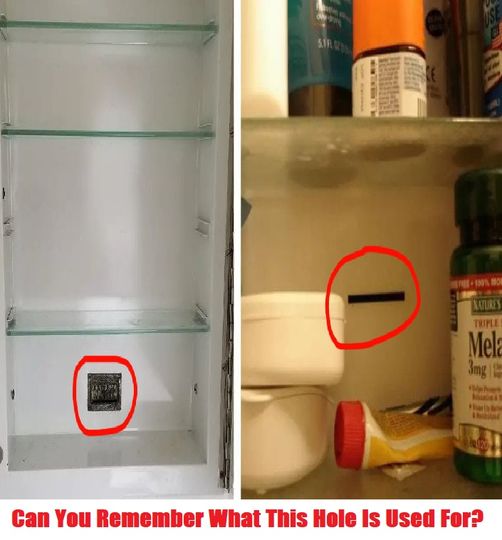My husband and I have been flipping houses for several years now, and throughout this journey, we’ve stumbled upon some pretty bizarre and unexpected discoveries. There’s a unique thrill in tearing down old walls and floors, never quite knowing what treasures (or junk) might be hiding behind them. Some of my all-time favorite finds include stumbling across a stash of old bills tucked away within a wall — and not just any old bills, but ones that have grown quite valuable over the years. Another time, we found hundreds of antique glass bottles, likely from the Prohibition era, buried beneath the floorboards of a house. But today, I want to share a curious discovery that we’ve encountered more than once in our adventures with old houses.

Now, if you’ve ever lived in or visited a home that’s close to a century old, there’s a good chance you’ve seen the odd feature I’m about to talk about. Picture this: you’re in the bathroom, and there’s an old medicine cabinet mounted on the wall. At first glance, it might look like a typical, somewhat outdated cabinet. But if you take a closer look at the back wall of the cabinet, you may notice a small slit cut into it. It’s the kind of detail that you might pass by without a second thought — or perhaps you’ve seen it in someone else’s home and wondered about its purpose.
Believe it or not, this little slit served a specific, practical function back in the day. To truly understand why it was there, we need to rewind to a time before modern stainless steel razor blades came into widespread use. In the days before the 1960s, the average man’s razor blades were made of thin metal and, unfortunately, did not last very long. Most men could only get one or two shaves out of these blades before they dulled and became unusable.
So, what did they do with those dull blades once they were no longer sharp? This was long before the days of safety disposals and recycling bins. And tossing used blades directly into the trash wasn’t exactly safe. After all, no one wanted a curious child or an unwitting adult accidentally getting cut by a sharp blade mixed in with the household garbage. That’s where this clever, yet peculiar, design feature came in.
Instead of throwing away their old blades, men would simply slide them through this little slot in the medicine cabinet. The blades would drop through the slit and fall into the empty space between the walls. Essentially, these old homes had a built-in razor blade disposal system. No fuss, no muss. You wouldn’t see the blades again, and they were safely out of reach from anyone who might accidentally stumble upon them.
Now, if you’ve ever had the opportunity to renovate an old house, you might have experienced the surprise of opening up a wall only to discover a pile — and I mean a pile — of old, rusted razor blades sitting there. At first glance, it can be a bit unsettling. Who would have guessed that behind that wall lies a silent, hidden graveyard of used blades that have been accumulating for decades? But once you understand the reasoning behind it, it starts to make a lot more sense. Back then, it was considered a smart and safe way to dispose of blades, especially in a time when household safety measures weren’t as advanced as they are today.
When I first came across one of these slits during a renovation, I was completely puzzled. I had to do a bit of research to figure out what it was for. And once I did, it was like a little lightbulb went off in my head. It’s fascinating to think about the practical ingenuity people had back in the day — solving problems in simple yet effective ways. Of course, nowadays, this method seems entirely impractical. We have proper trash disposal systems, recycling, and even special containers for sharp objects. But at the time, this hidden slot was a clever solution for a very real problem.
So, the next time you find yourself in an old house, take a close look at the medicine cabinet if it’s still intact. You might just spot one of those curious little slits and know exactly what it was used for. It’s a small, quirky reminder of how people adapted to the challenges of everyday life in the past, long before the conveniences we take for granted today came along.
And who knows — maybe in a few decades, people will look back at some of our current solutions and wonder why on earth we did things the way we did. History has a funny way of making the ordinary seem extraordinary with the passage of time.





